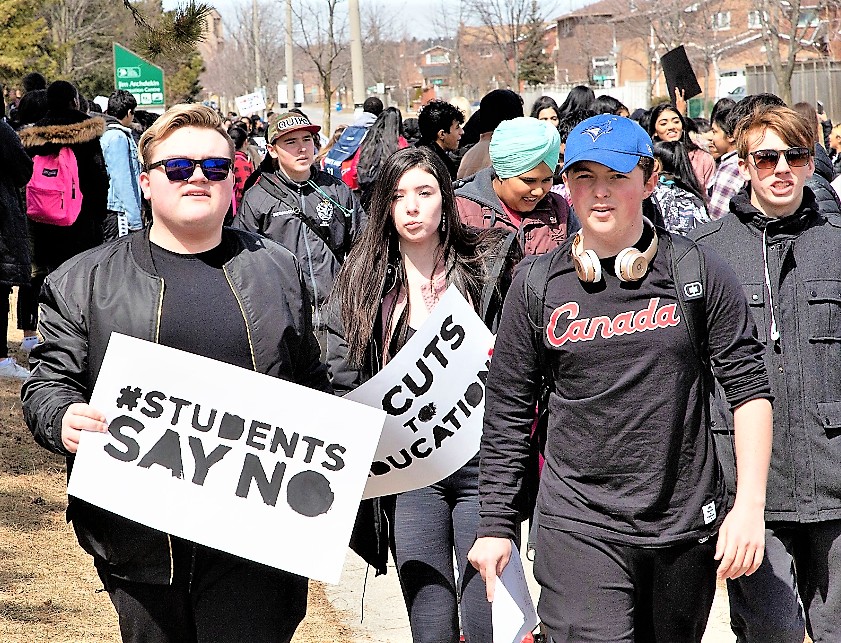
Province backs down on class size increase as unions move forward with strike votes
As teachers unions across the province prepare to vote on potential strike action, the province of Ontario has once again backpedalled on a previous decision, this time announcing a partial reversal of high school class size increases, to limit the number of students at 25, instead of 28. But a union head says the PCs are hiding a loophole in the proposal that could lead to even larger class sizes.
The conciliatory move, announced by Education Minister Stephen Lecce in a press conference at Queen’s Park Thursday, is the continuation of a decision made in August when the province announced it would be delaying the class size increases for the 2019/2020 school year.

Education Minister Stephen Lecce
Lecce noted the government had heard “overwhelmingly” that parents want a deal to be reached with teachers, and a step back on the class sizes was “a sufficient step forward.”
“We have been listening, we have heard your concerns, and we are taking acton by reducing class sizes, this government remains solely focussed on one aim, that is to keep your child in class,” Lecce said. “Strike action would disproportionally hurt our most vulnerable students in the classroom.”
The reduction in class sizes was framed by Lecce as an olive branch for the unions after weeks of negotiations failed to result in a deal due to differences around teacher compensation. The province is looking to keep salary increases to 1 percent annually throughout the term of the next contract, and the Ontario Secondary School Teachers Federation (OSSTF) is seeking 2 percent.
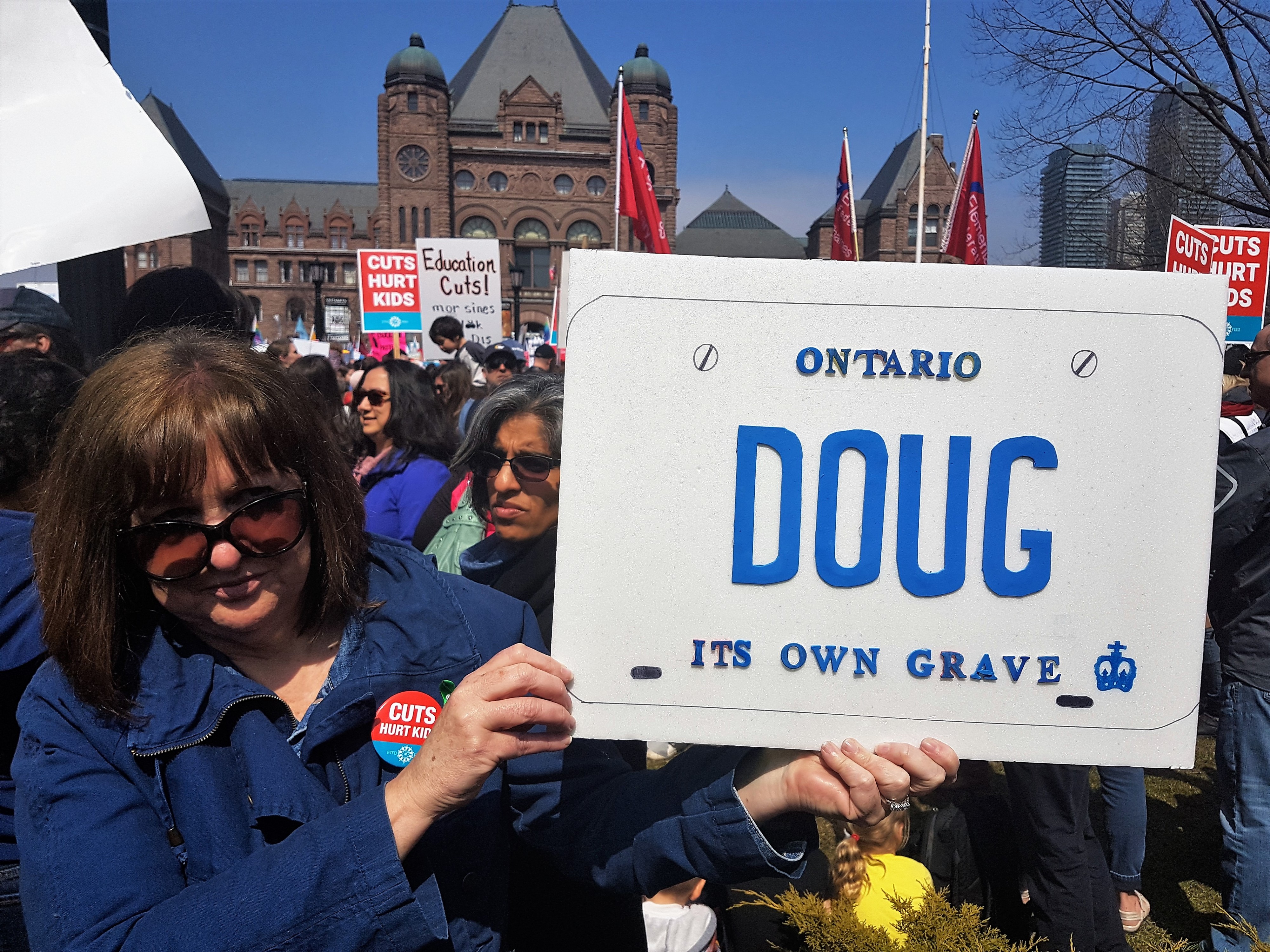
Protestors outside Queen's Park in the spring after Doug Ford announced cuts to education
Lecce explained that immediately following the province’s offer to lower the class size caps to 25 as opposed to 28, the unions immediately took the next step toward strike action, or what is known as a “no board” report. In Brampton, a meeting is scheduled on Oct. 28 for Peel’s OSSTF members to learn more about the ongoing strike votes.
“They opted to escalate at a time when we tried to de-escalate,” Lecce said.
However, similar to the provincial decision in August to delay the class size increases, which union president Harvey Bischof labelled as “smoke and mirrors” from the province, today’s announcement was denounced by the union as misleading as it would actually remove class size caps in local collective agreements with boards across the province, he said.
“The proposal that we received this morning is, in fact, worse than the Ford government’s original plan to hike average class size ratios to 28:1,” said Bischof in a statement. “A move from the current class size ratio of 22:1 to 25:1 would still remove roughly 5,000 teachers from our high schools. And with the removal of locally-enforceable class size caps, there would essentially be no limits on the size of classes into which Ontario students could be squeezed.”
When asked about the removal of these local class size limits by reporters during the press conference, Lecce sidestepped the question, repeatedly reiterating that the real problem lies with the union, not the province.
“It is a sufficient number to get a deal,” he said of the class size decrease, adding the province has continued to put forward “demonstrable” actions toward avoiding a strike.
“What my partners in the union (are) doing is the exact opposite,” he said. “There’s a casualty of this action and it isn’t me, and it isn’t the union, it’s the kids…Let’s get out act together and get a deal.”
When the province first announced the proposed class sizes, the news was particularly worrisome for educators in Brampton. The city has one of the highest average rates of school-age children per household in the province, largely because of a higher average number of residents per household (according to the 2016 census Brampton had 3.5 residents per household, compared to 2.6 across Ontario and 2.4 nationally) and large numbers of families living in secondary suites which planners cannot predict when trying to align the number of area building permits with school capacity in the same neighbourhoods.
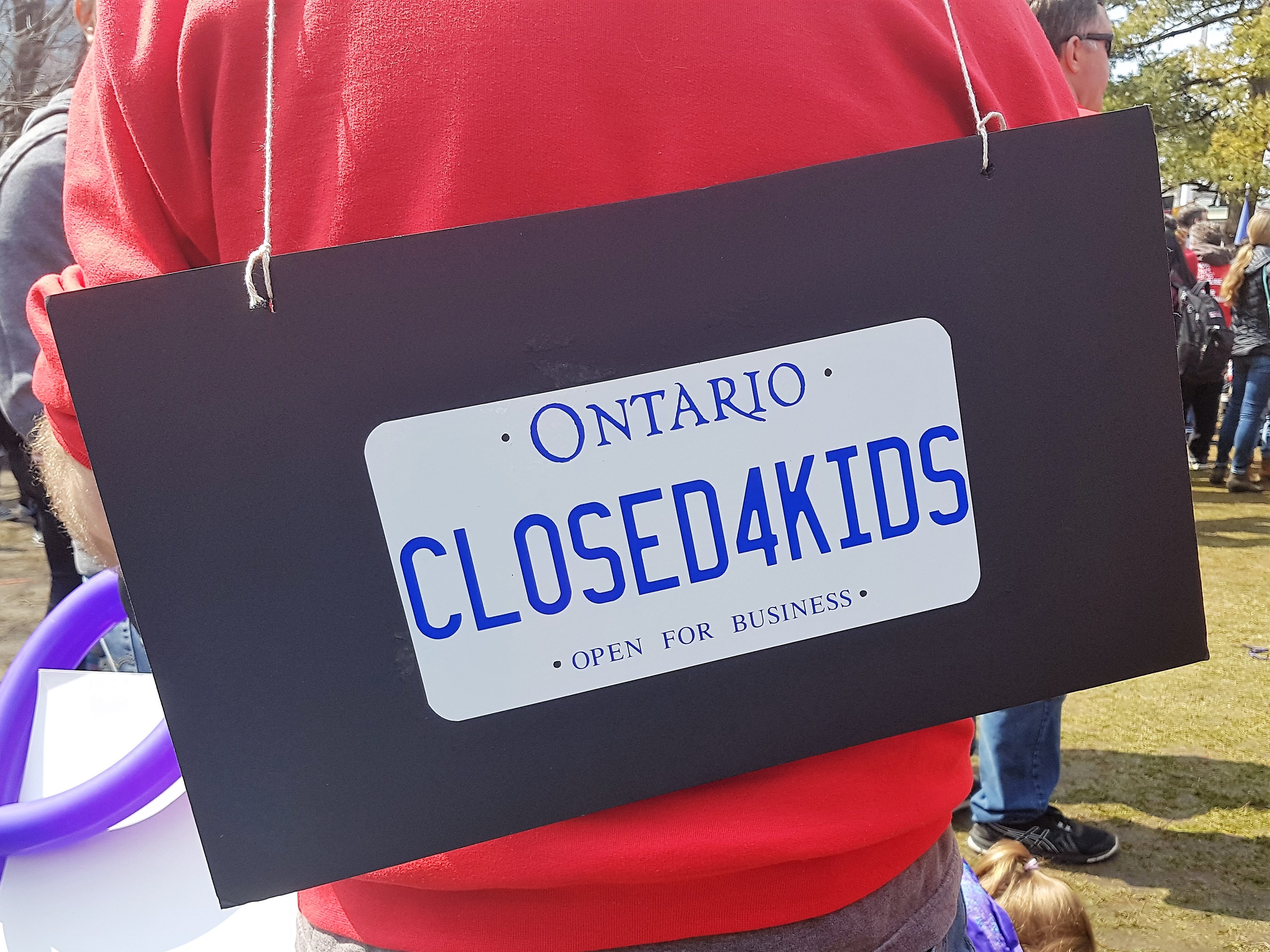
This has led to the city’s schools already beyond their capacity and bursting at the seams, forcing hundreds of students to learn outside school buildings in portable classrooms that are intended for temporary relief. In Brampton, it’s not uncommon to see more than a dozen of these portable structures, which have become permanent fixtures, lining the fields and parking lots of the city’s schools.
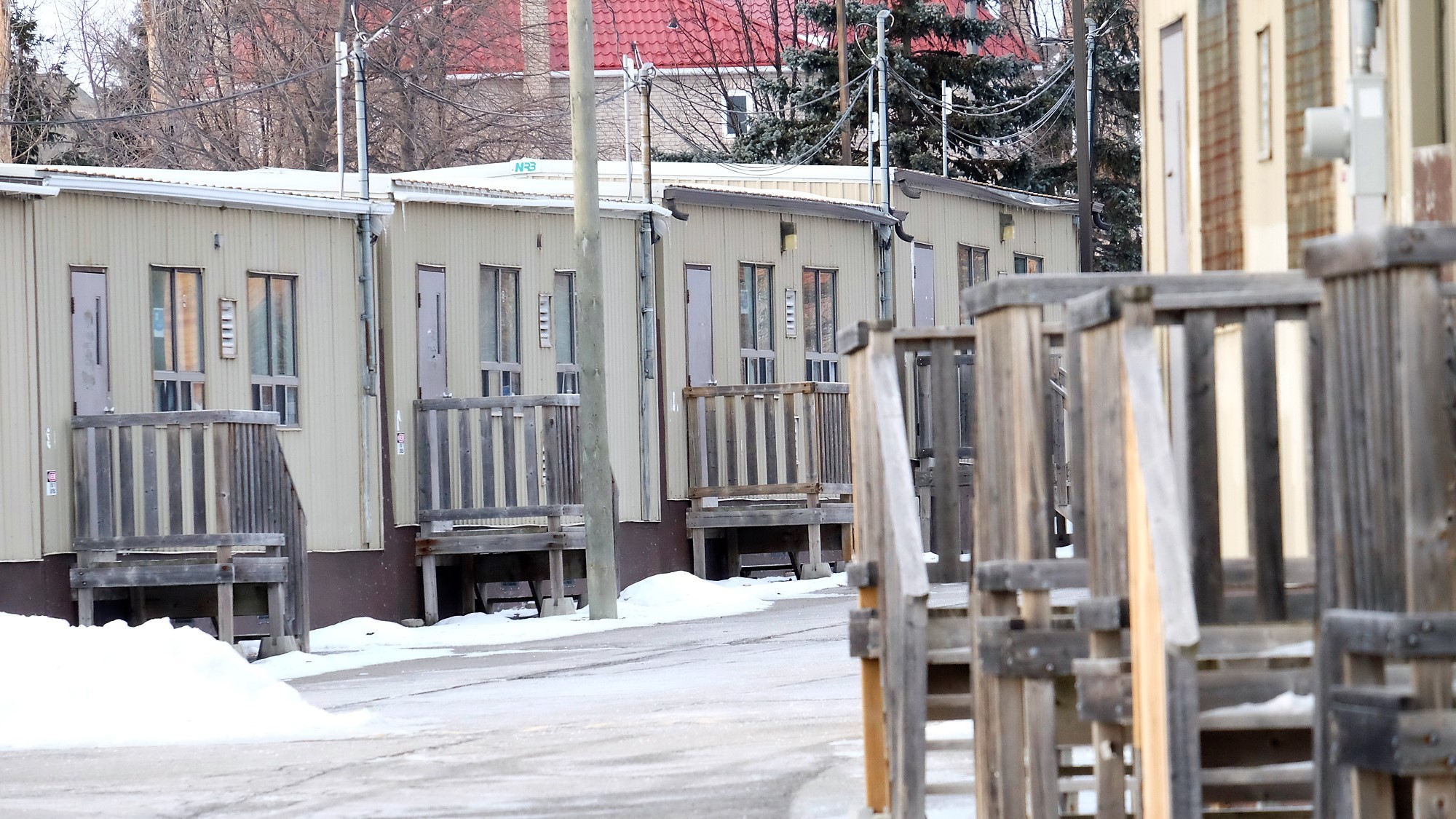
The province’s reasoning behind increasing average class sizes was part of a move by the Ford government to do more with less, as the budget also saw a reduction in per-student funding.
Meanwhile Ford’s popularity has plummeted. An October 19 DARTMaru BluePoll showed the premier’s approval rating sits at 26 percent. His cuts to public education funding have been the major reason for his dismal support across the province.
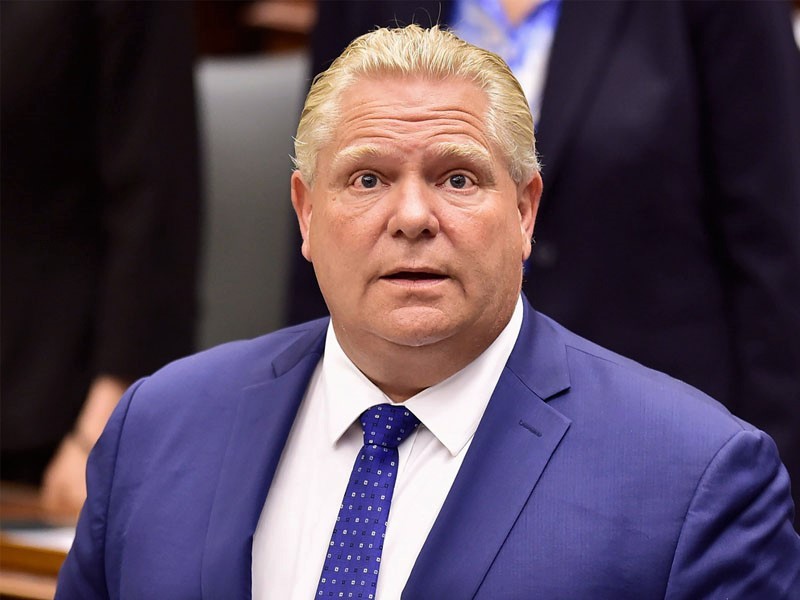
Premier Doug Ford has not been very visible since the start of the federal election campaign
Core support for public schools comes through the Grants for Student Needs (GSN) funding. As part of their budget, the governing PCs hailed what they described as an increase in funding to schools, projecting total spending for 2019-20 to be $24.65 billion, up slightly from the $24.61 billion invested in the previous school year. But the slight increase does not show the actual decrease in per student funding. (Funds are spread across many key grant areas, providing for classroom needs, school buildings and special programs.)
During the 2018-19 school year, the province spent an average of $12,293 per student, with just over 2 million students in the public education system. That amount will drop to about $12,246 for 2019-20, as enrolment province-wide is expected to grow by 11,601 students. So the claim by the PCs that more money is going into the education budget, while true, is misleading.
Today’s announcement provides further evidence that the ministry did not have a well-formulated education plan when it rolled out its originally proposed cuts earlier in the year, resulting in the continued flip-flopping over fundamental education policies and the dismissal of the person Ford first picked to lead the crucial file.
In late June, as part of Ford’s sweeping cabinet shuffle, Lisa Thompson was dropped as education minister and Lecce was named to step into the role. At least one union leader told The Pointer at the time that his arrival marked a dramatic departure from Thompson’s stance toward educators, as she had shut down almost all communication between the ministry and school boards, according to the representative.
Gail Bannister-Clarke, president of the Peel Elementary Teachers’ Local and an executive member of the Elementary Teachers’ Federation of Ontario, told The Pointer in August that Lecce immediately opened up lines of communication that had been closed under Thompson.
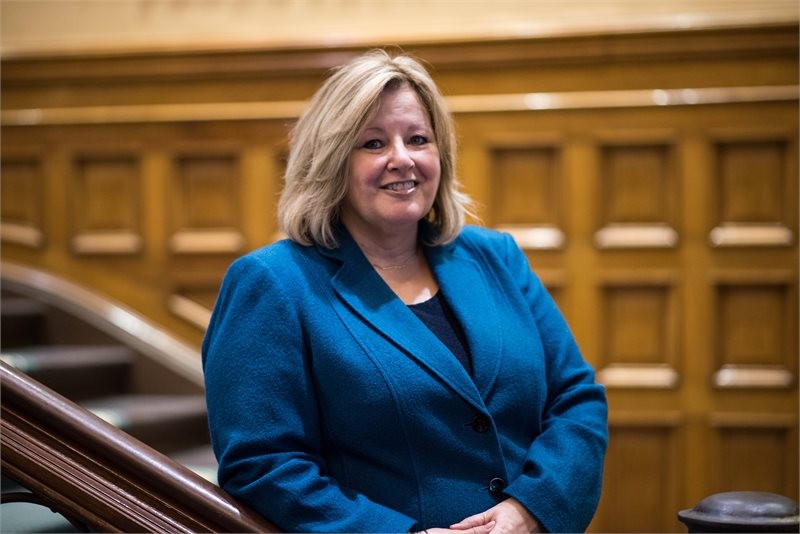
Lisa Thompson was removed as education minister in June
She said under the former minister it was a similar situation for the various unions representing teachers in the ongoing collective bargaining negotiation, ahead of the looming deadline to sign new contracts that eventually expired at the end of August.
Thompson had suggested the larger class sizes would toughen-up students and make them more resilient. She was widely criticized for being callous and failing to understand the potential negative impacts to education outcomes.
It’s this consistently changing policy that Bischof says has hurt students the most.
“This fall we are already seeing the chaos that this government’s class size policies are creating in Ontario high schools,” continued Bischof in today’s press release. “To the degree that any semblance of order has been maintained, we have the class size caps in our local collective agreements to thank for that. An agreement on our part to remove those caps would be an agreement to undermine the learning environments in our schools. It would frankly amount to a betrayal of our students.”
“The Ford government continues to offer bogus numbers and incomplete information in an effort to misdirect the attention of the public,” he added. “They simply don’t want to acknowledge or discuss the real issue, which is the conditions under which our students are expected to succeed.”
Email: [email protected]
Twitter: @JoeljWittnebel
Submit a correction about this story


